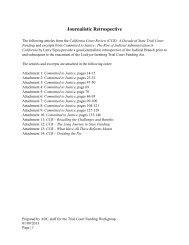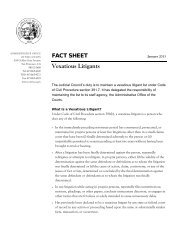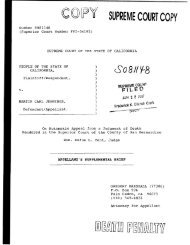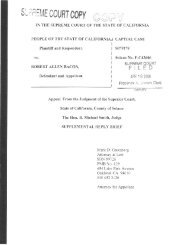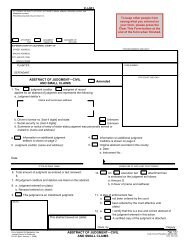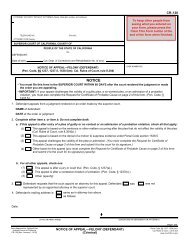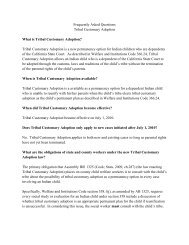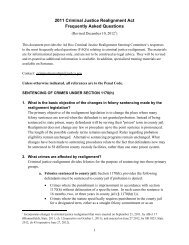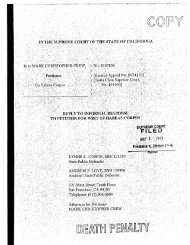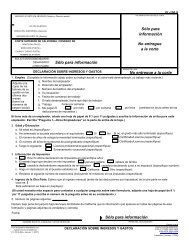Appellant, William Satele, Reply Brief - California Courts - State of ...
Appellant, William Satele, Reply Brief - California Courts - State of ...
Appellant, William Satele, Reply Brief - California Courts - State of ...
Create successful ePaper yourself
Turn your PDF publications into a flip-book with our unique Google optimized e-Paper software.
shot Fuller and Robinson, and that Nunez was in his house at the time 6 . (RB at p.<br />
178., referring to 8RT 1707; 7RT 1615-1622; 8RT 1626-1628, 1631, 1699-1711,<br />
1747-1749.) However, it is known that appellant was not alone in the car. If<br />
respondent is contending this statement <strong>of</strong>appellant's is the accurate version <strong>of</strong>the<br />
events, it clears Nunez <strong>of</strong> any culpability, a result with respondent would<br />
obviously dispute. Thus, this is undeniably an example <strong>of</strong> appellant exaggerating<br />
his role in the <strong>of</strong>fense. In short, once again, the jury could accept this statement as<br />
pro<strong>of</strong> that appellant was the actual shooter, but it is not necessary that the jury<br />
reach this decision.<br />
Fourth, as appellant has argued previously, because the prosecution's<br />
theory at trial was that it had not proven who acted as the shooter, respondent must<br />
be estopped from arguing on appeal that the evidence necessarily established the<br />
fact that both appellant and Nunez were the shooters. (Ante, at pp. 7-9)<br />
Nor does the other evidence cited by respondent prove appellant was the<br />
shooter or that appellant had the requisite intent.<br />
For example, respondent argues that the day after the murders appellant<br />
fled from the car where the murder weapon was found, and claims that this is<br />
evidence <strong>of</strong> appellant's supposed intent to kill. (RB at p. 179.) However, while<br />
this evidence might logically create an inference that appellant was involved in<br />
some crime which might prompt a gang member to flee from the police, it is<br />
hardly conclusive evidence as to either appellant's specific role in the crime or his<br />
intent on the night <strong>of</strong>the crime. Evidence that appellant fled the car the day after<br />
the crime is not evidence that he was in the car on the night <strong>of</strong>the crime. It must<br />
also be remembered that when the police stopped the car and found the weapon,<br />
Nunez was the driver <strong>of</strong> the car, appellant and another person were the two<br />
6 This is based on a statement from the interrogation <strong>of</strong> Contreras by Neff and<br />
Millington on February 2, 1999. After Conteras denied making the statement at<br />
trial, he was impeached with the tape <strong>of</strong> that interrogation. (8RT 1626-1628,<br />
1707, 1747, Exhibits 39 and 45.)<br />
59



